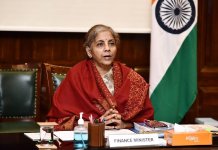When you need a six, they score a single after a big heave. This was the story of political response to tax reforms in India. Indirect tax reform implied under the newly launched GST can be traced back to the mid-1970s.
Reforms on taxation in notable scale were started by two committees appointed in the 1970s; though the reforms they suggested were implemented from late 1980s onwards.
Justice KN Wanchoo and LK Jha were considered as the architects of the tax reforms. They were appointed in 1970s, but their suggestions are considered only after decades. The first step to GST can be traced back to the mid-1970s with the appointment of the indirect taxation enquiry committee headed by LK Jha. Wanchoo looked into direct taxes.
Jha, who was considered as an accomplished reformer was an Indian Civil Service officer. He was taught by eminent economists including Lord Keynes (Cambridge) and Harold Laski (LSE) and became the governor of the RBI. Jha represented a generation of quality educated people opting for Indian Civil Services.
In 1976, Jha suggested VAT in the form of MAN VAT (VAT at the Manufacturing level).
Following Jha’s recommendations a dare move was made by VP Singh when he introduced MODVAT (Modified Value Added Taxation) in 1986, when he was Finance Minister. MODVAT was a predecessor of the present day VAT and it was the almost the same MANVAT suggested by LK Jha. Initially, it was introduced for selected commodities under the Union Excise Duties (UED).
There were protests from manufactures and for a while, the MODVAT reform seemed like the introduction of token coin by Mohammad Bin Thuglak in the 14th century.
Few years later, another Singh – Dr Manmohan Singh- the architect of economic reforms, carried forward from where VP Singh left. He extended MODVAT to almost all commodities and reduced excise duty rates. Later Yashwant Sinha introduced a full -fledged VAT for UED in the name CENVAT in 1999. In 2006, most of the states have adopted VAT structure for their sales tax. Jha died long before in 1988.
The attempt of a nationwide VAT was an unthinkable one even at the beginning of the new millennium as it means state sales tax and central excise duties and services taxes are to be merged into one. For the state, the sales tax is the largest tax revenue.
But still, the advantage of a single tax and its beneficial impact on unifying the economy and promoting economic activities are awesome.
Considering this, the first move towards GST was made by Atal Bihari Vajpayee government in 2000 by initiating discussions with state Finance Ministers. In 2004, Vijay Kelkar suggested a comprehensive GST and in the next year, P Chidambaram set launch of GST as a budget goal.
Thus it took nearly 16 years for GST on the launch pad after being conceptualized.
Starting from LK Jha to Arun Jaitely, the GST reform has several mentors as it took nearly two generations for India to launch a common indirect tax regime.
*********










